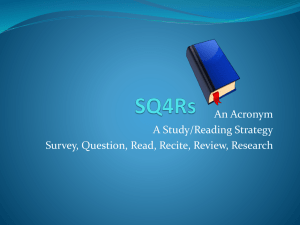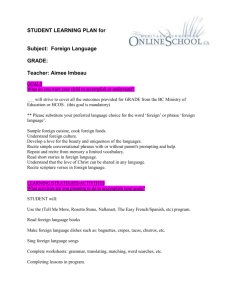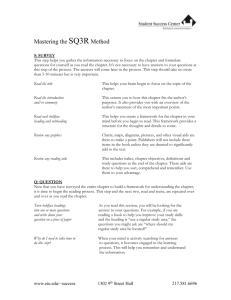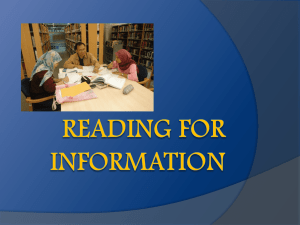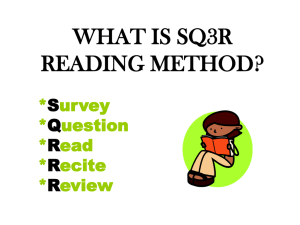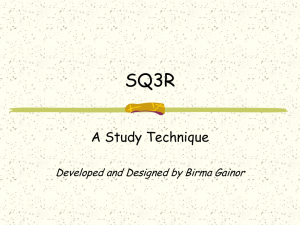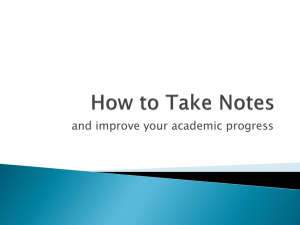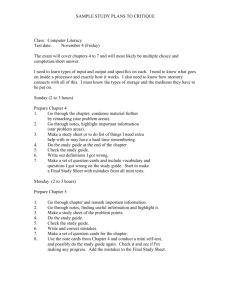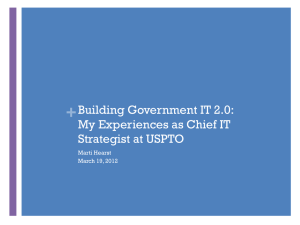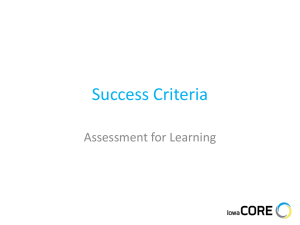The CLS Bank Decision
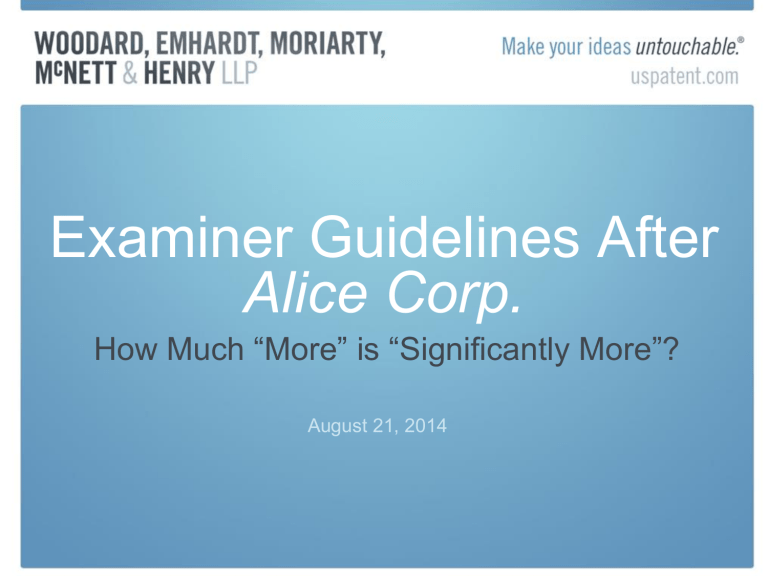
Examiner Guidelines After
Alice Corp.
How Much “More” is “Significantly More”?
August 21, 2014
Overview of CLS Bank Int. v. Alice Corp.
• Alice Corp. claims system and method for reducing risk that a party to a deal won’t pay.
• SCOTUS opinion :
– This is a “computer-implemented scheme for mitigating ‘settlement risk’ . . . by using a thirdparty intermediary.”
– claims are drawn to “the abstract idea of intermediated settlement”
– “merely requiring generic computer implementation fails to transform that abstract idea into a patenteligible invention.”
USPTO Response
• Most recent USPTO memo to Examiners:
Includes preliminary instructions for analyzing claims
• USPTO says Alice changes the process in two ways:
– Must now use the same analysis for all types of judicial exceptions (not Bilski for abstract ideas and Mayo for laws of nature)
– Now use same analysis for all categories of claims involving abstract ideas (not “tangibility test” for products and Bilski for processes)
Post Alice Examination Analysis
• Determine whether claim is directed to statutory category: process, machine, manufacture, composition of matter
• Engage two-step Abstract Idea Test from
SCOTUS opinion:
– Determine if claim falls into a judicial exception:
Law of nature, natural phenomenon, abstract idea
– Determine whether claim is patent eligible
Part 1: Is the claim directed to an Abstract
Idea?
• Does it monopolize “the basic tools of science and technological work?”
• Does it “impede innovation more than it would promote it?”
• Does it “integrate the building blocks of human ingenuity into something more by applying the abstract idea in a meaningful way?”
• Is it “ fundamental to economic practices?”
• Is it “an idea itself” that is to say “a principle, an original cause, a motive?”
• Is it a mathematical formula?
Part 2: Is the Claim Patent Eligible?
• Does the claim recite “significantly more” than the abstract idea itself?
– Are there “other limitations in the claim that show patenteligible application of the abstract idea?”
– Does it contain only a “mere instruction to apply the abstract idea?
• How much more is “significantly more”?
Part 2: Examples of “more” that may be
“significant” enough
• Does the claim recite an “improvement” to
“another technology or technical field?”
• Does it recite “improvements in the function of the computer itself?”
• Does it recite “meaningful limitations beyond generally linking the use of an abstract idea to a particular technological environment.”
Part 2: Examples of “more” that may not be
“significant” enough
• Does the claim simply add “apply it” or equivalent language to the abstract idea?
• Does the claim simply recite “implementing” the idea on a computer?
• Does the claim require no more than a generic computer to perform “generic computer functions that are well-understood, routine, and conventional activities previously known to the industry ?”
After the two-step analysis. . .
• Continue regardless of outcome of abstract idea analysis
• Determine utility and double patenting under
101, and non-statutory double patenting
• Determine patentability under 102, 103, and
112
Other Guidance
• “Consider the claim as a whole by considering all claim elements, both individually and in combination.”
• “The basic inquiries to determine subject matter eligibility remain the same as explained in MPEP 2106(I).”
• Business method/software applications not patent ineligible per se
Recent Developments
• The USPTO is withdrawing some notices of allowance
• Some withdrawn after issue fee was paid (!)
– “We withdrew notice of allowances for some of these applications due to the presence of at least one claim having an abstract idea and no more than a generic computer to perform generic computer functions.”
– “Applicants who had already paid the issue fee for applications withdrawn from allowance may request a refund . . .”
Practice Tips
• In the near future: Recommend clients pay issue fee early for software applications!
• SCOTUS language suggests movement toward European “technical feature” to solve a
“technical problem” standard:
– Does the claim recite an “improvement” to
“another technology or technical field?”
– Does it recite “improvements in the function of the computer itself?”
Practice Tips Cont.
• No clear guidance on what an “abstract idea” is. SCOTUS does not define it.
• Muddies “abstract idea” with 102/103: How is a “conventional activity previously known to the industry ” determined without considering prior art?
• Expect more (not necessarily better) rejections on 101 issues
• Remains to be seen how much “more” recitation CAFC, DC, or Examiners will require
